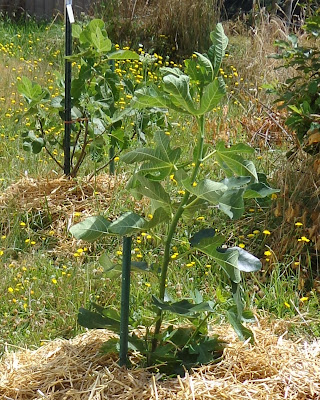 |
| Brunswick fig after the freeze |
After the freeze to 8°F or 9°F, depending on what site you believe, I wanted to to a welfare check on the fig trees. It would not surprise me if all of the buds were frozen and twigs dessicated.
Hard to say, but so far, so good. Many of the terminal buds are frozen and dessicated, but lateral buds seem less affected.
Brunswick, so far, looks good. I don't see any chewing damage, either. On this or the other trees.
Champagne is a hybrid of Celeste, which is considered cold tolerant, and an unknown variety. Developed at Louisiana State University. Again the terminal buds look dessicated.
 |
| Champagne fig |
Give the rapid growth, it would not surprise me if this tree was unprepared for winter. First year trees are often the most affected. But so far, it looks OK.
Similar situation for Atreano. Atreano is more well established for Pacific NW. But again, this tree grew rapidly and the growth was not hardened off before winter.
Carini is completely untested for Pacific NW, being a family heirloom variety from Pennsylvania / New Jersey. Those states get some cold. Growth for Carini was not as rank as Champagne and Atreano, so it may be better lignified. Looking OK, there are still lateral buds.
Smith, a Louisiana bayou heritage variety, is also untested in the NW. One site speculated Smith was brought to the US from Yugoslavian immigrants, centuries ago. So it may have more cold hardiness than one would guess. Also grew rapidly, maybe a little better lignified than the two in the former chicken yard (Champagne, Atgeano) . The twigs are an interesting light brown.
 |
| Atreano fig |
LSU Tiger, similar to Champagne in origin, and also untested here. Also, with growth not as rank as the former chicken yard trees. South of the house - as are Carini, Sal's, Smith, Petite negri - so maybe a degree warmer.
 |
| Carini Sicilian fig |
 |
| Smith Louisiana fig |
Sal's fig has come through winters here in adverse conditions - in cotainers, frozen solid. It should be more established now. I have it wrapped for rodent protection, and sprayed with hot pepper wax - as with all of the other trees. It looks OK. Next year I want to train Sal's into a more vertical, less bushy shape. Easier to manage.
 |
| Louisiana Tiger fig |
 |
| Sal's Sicillian fig |
So in summary, with high probability of future freezes ahead, and a historic, 40 year freeze behind us, so far, so good. Better than expected.




















